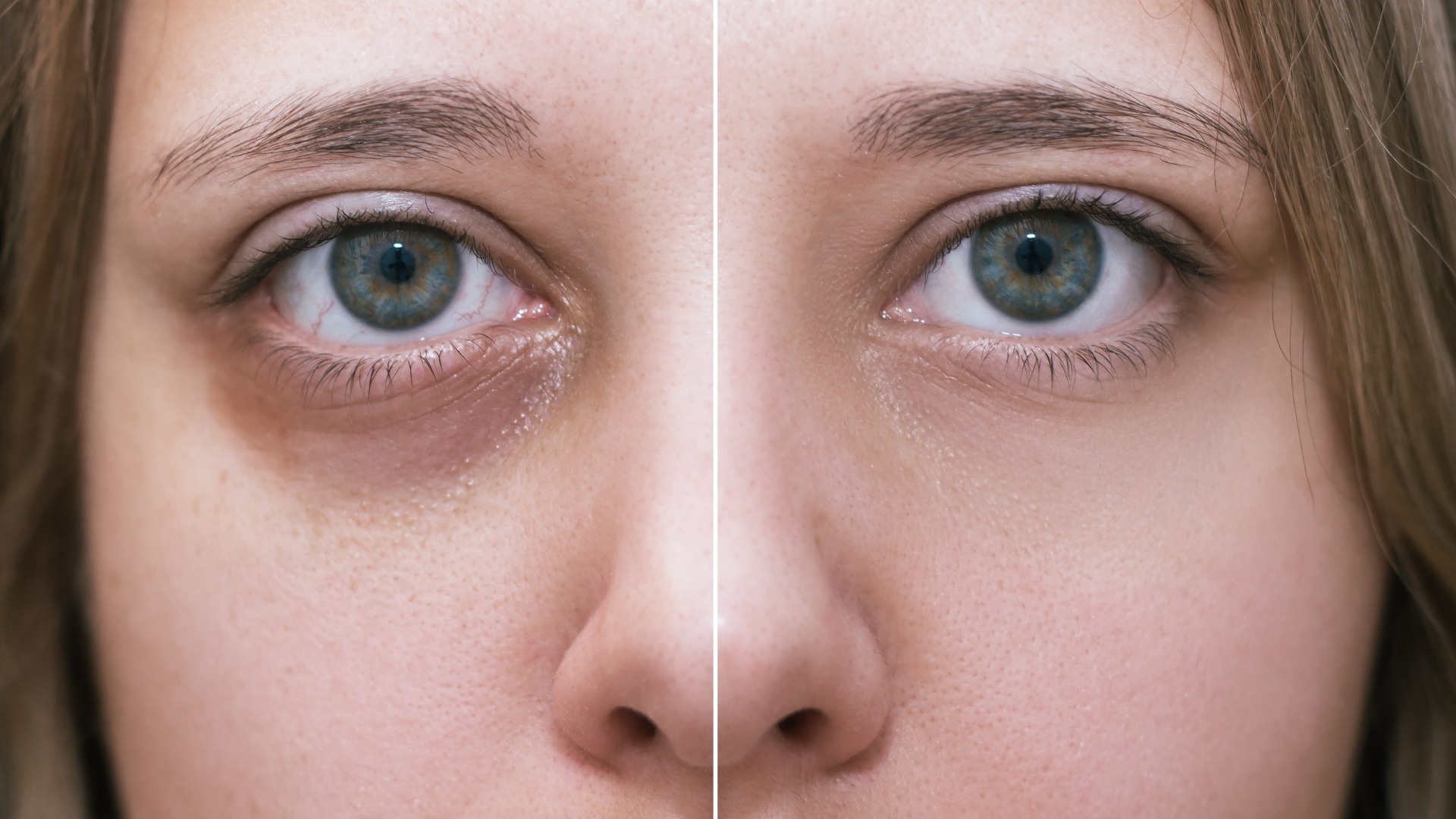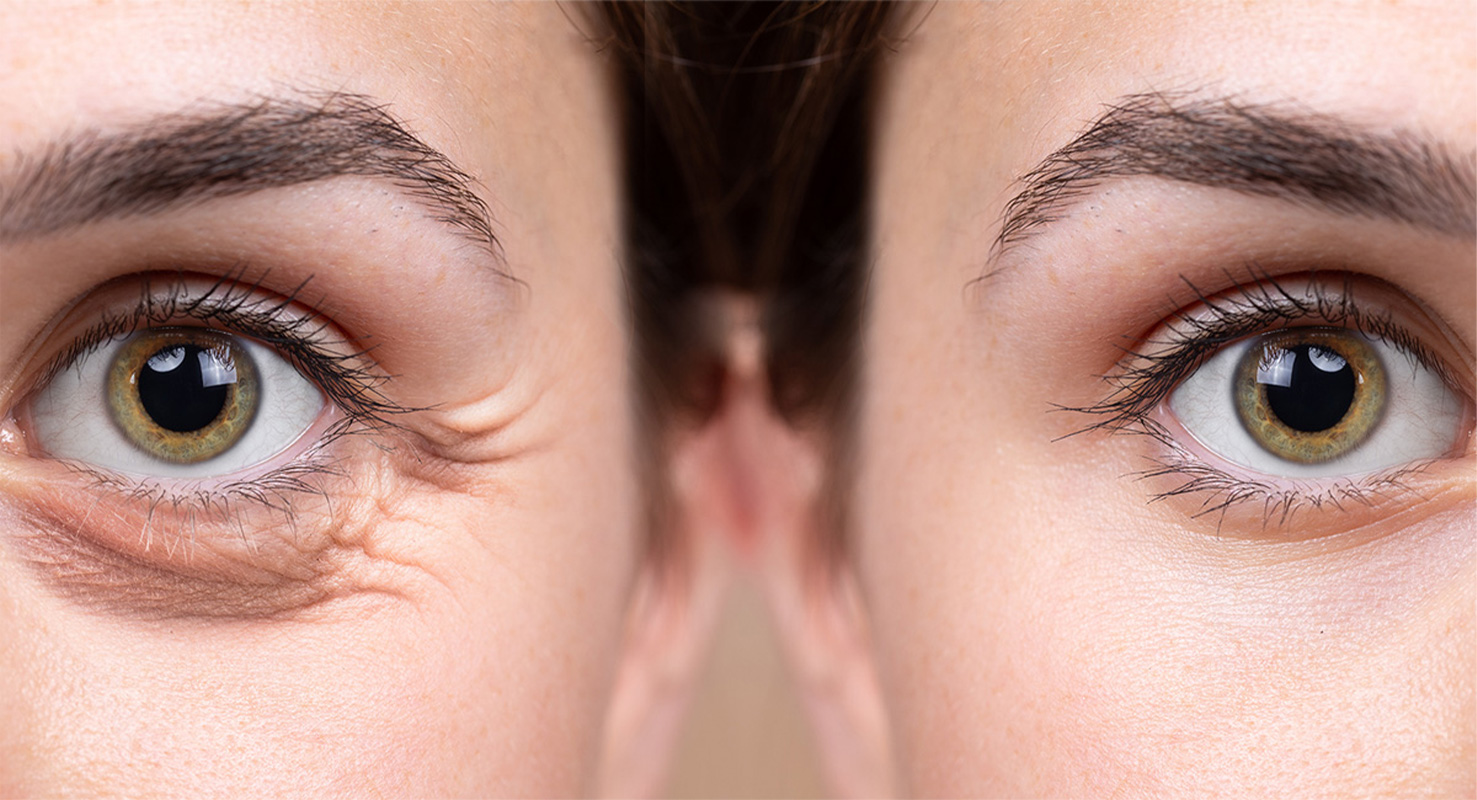Hyaluronic acid injections under the eyes are popularly done for indications like dark circles, hollow tear troughs, and fine lines. While considered generally safe, it is a procedure that requires precision and expertise with high-quality material to optimize the results and minimize risks. This article focuses on the safety, efficacy, and considerations from a professional point of view regarding under-eye hyaluronic acid fillers.
What Is Hyaluronic Acid?
Hydrophilic in nature, hyaluronic acid is a glycosaminoglycan, or a naturally occurring polysaccharide found within the extracellular matrix of human tissues, such as skin, eyes, and joints. This substance has been uniquely designed to bind water molecules, which can provide hydration, elasticity, and structural support.
In dermal fillers, HA is often used in a cross-linked form to enhance its stability and longevity. For example, fillers utilizing advanced cross-linking technology, such as BDDE (1,4-Butanediol Diglycidyl Ether), demonstrate a higher resistance to enzymatic degradation, lasting up to 12 months or longer in dynamic facial areas. ELE GLOBAL’s HA fillers leverage these technologies to offer consistent volumizing effects while maintaining a natural texture that integrates seamlessly with surrounding tissues.
Clinical studies have demonstrated that cross-linked HA retains 70% of its volumizing capacity at 6 months, whereas for non-cross-linked HA, this is 30%. This makes it especially suitable for delicate areas such as the under-eyes, where long-lasting results are desired.
Why Under-Eye Filler?
The area under the eyes can acquire volume loss from aging, creating a hollowed appearance of the tear troughs. According to one article in Aesthetic Surgery Journal, 64% of people between the ages of 30-50 are worried about the hollows underneath the eyes. This may be due to genetic predisposition, fat pad migration, or dermal layer thinning.
HA fillers offer a non-surgical solution to restore volume and smoothen the transition between the lower eyelid and the cheek. For instance:
-
Immediate Results: Improvement is usually apparent immediately following injection, with further refinement as the swelling settles within 1-2 weeks.
-
Long-Lasting Effects: High-viscosity fillers designed for tear troughs, such as those produced by ELE GLOBAL, can last 9-12 months depending on individual metabolism and product selection.
Data from the International Society of Aesthetic Plastic Surgery shows a 27% annual increase in under-eye filler procedures, reflecting growing demand for minimally invasive solutions against facial aging.
Is It Really Safe?
The safety of under-eye HA injections depends upon three main factors:
-
Product Quality: High-purity, medical-grade HA fillers reduce the risk of adverse reactions. Low-quality products containing impurities may produce granulomas or inflammatory reactions.
-
Injection Technique: Due to the anatomy, the under-eye region is compounded with superficial blood vessels and thin skin covering. The injector needs to know the periorbital anatomy to prevent vascular occlusion and other complications.
-
Patient Suitability: Skin type and thickness, among individual variables, need consideration so that this treatment will be both safe and effective.
A 2022 study published in the Journal of Cosmetic Dermatology showed that 94% of complications occurring with HA fillers happen when the treatment is performed by an untrained practitioner with non-certified products. ELE GLOBAL offers ISO- and CE-certified fillers, prepared for a delicate area, to address such concerns, ensuring safety as well as effectiveness.
Potential Risks Explained
HA fillers are safe; however, some of their potential complications include:
-
Swelling and Bruising: These are the most common side effects and can occur in up to 25% of cases. Swelling usually resolves within 3-5 days, while bruising can last for up to 2 weeks. The use of ice packs and arnica-based creams can hasten the process.
-
Vascular Occlusion: Although rare, occurring in approximately 0.05% of cases, this can lead to skin necrosis or even blindness if untreated. To mitigate this risk, practitioners often use blunt-tip cannulas, which reduce the chance of vessel penetration by 75% compared to sharp needles.
-
Tyndall Effect: Poorly placed HA within the superficial dermis may create a bluish discoloration. This happens in under 2% of procedures and easily corrects with hyaluronidase, an enzyme that dissolves HA fillers.
ELE GLOBAL fillers are developed to have the most proper viscosity and elasticity for their ability to stay in the proper tissue plane while maintaining results in a very organic manner. This minimizes the chances of complications, even in sensitive areas such as under the eyes.
Who Should Not Get Them?
Not everyone is a good candidate for receiving under-eye HA fillers. Disadvantages include the following conditions:
-
Active Skin Conditions or Infections: Conditions like eczema, psoriasis, or herpes simplex could aggravate the post-procedure inflammation.
-
Autoimmune Disorders: Conditions such as lupus and rheumatoid arthritis make a patient more prone to inflammatory responses from HA fillers.
-
History of Severe Allergies: While very rare, hypersensitivity to the HA or the cross-linking agents may result in anaphylaxis.
Individuals with very thin skin should also avoid the treatment because of a higher possibility of the visibility of fillers or the Tyndall effect. In such cases, alternatives like autologous fat transfer could be better.
Aftercare Tips
Aftercare tips play an important role in minimizing complications and extending the results of treatment. It is noted that 40% of swelling and bruising can be reduced if aftercare tips are seriously followed by the patients. Recommendations for aftercare include:
-
Strenuous Activity: Avoid exercise, saunas, or hot baths for 48 hours post-procedure; this may reduce the risk of swelling.
-
Cold Compress Application: Application of cold for 10-minute intervals may reduce inflammation and discomfort during the first 24 hours.
-
Hydration and Sunscreen Application: Adequate hydration supports the hydrating effects of HA, while sunscreens may prevent pigmentary changes in the treated area.
ELE GLOBAL offers specialty post-procedure care kits that include anti-inflammatory serums and hydrating masks enriched with hyaluronic acid to promote faster recovery and better results.
Expert Advice Matters
The expertise of the injector largely accounts for the safety and success of under-eye HA filler procedures. In a questionnaire among patients, the Aesthetic Medical Journal showed that patients treated by board-certified practitioners reported a 96% satisfaction rate in comparison to 78% with nonspecialist providers.
Qualified injectors use advanced techniques, such as linear threading and retrograde injection, to ensure precise filler placement and minimize complications. Moreover, products like ELE GLOBAL’s premium HA fillers are tailored for professional use, offering enhanced rheological properties and predictable outcomes.
Choosing a trusted practitioner and high-quality products significantly reduces risks and ensures long-lasting, natural-looking results for under-eye rejuvenation.





